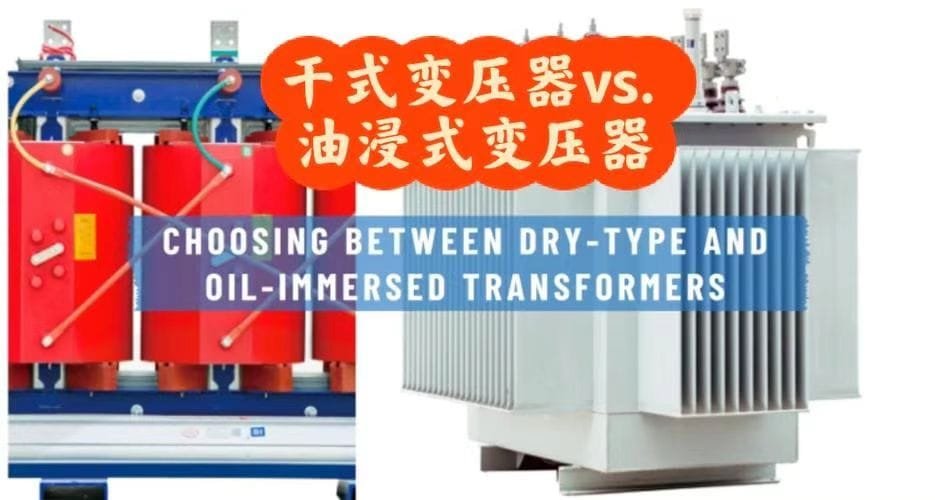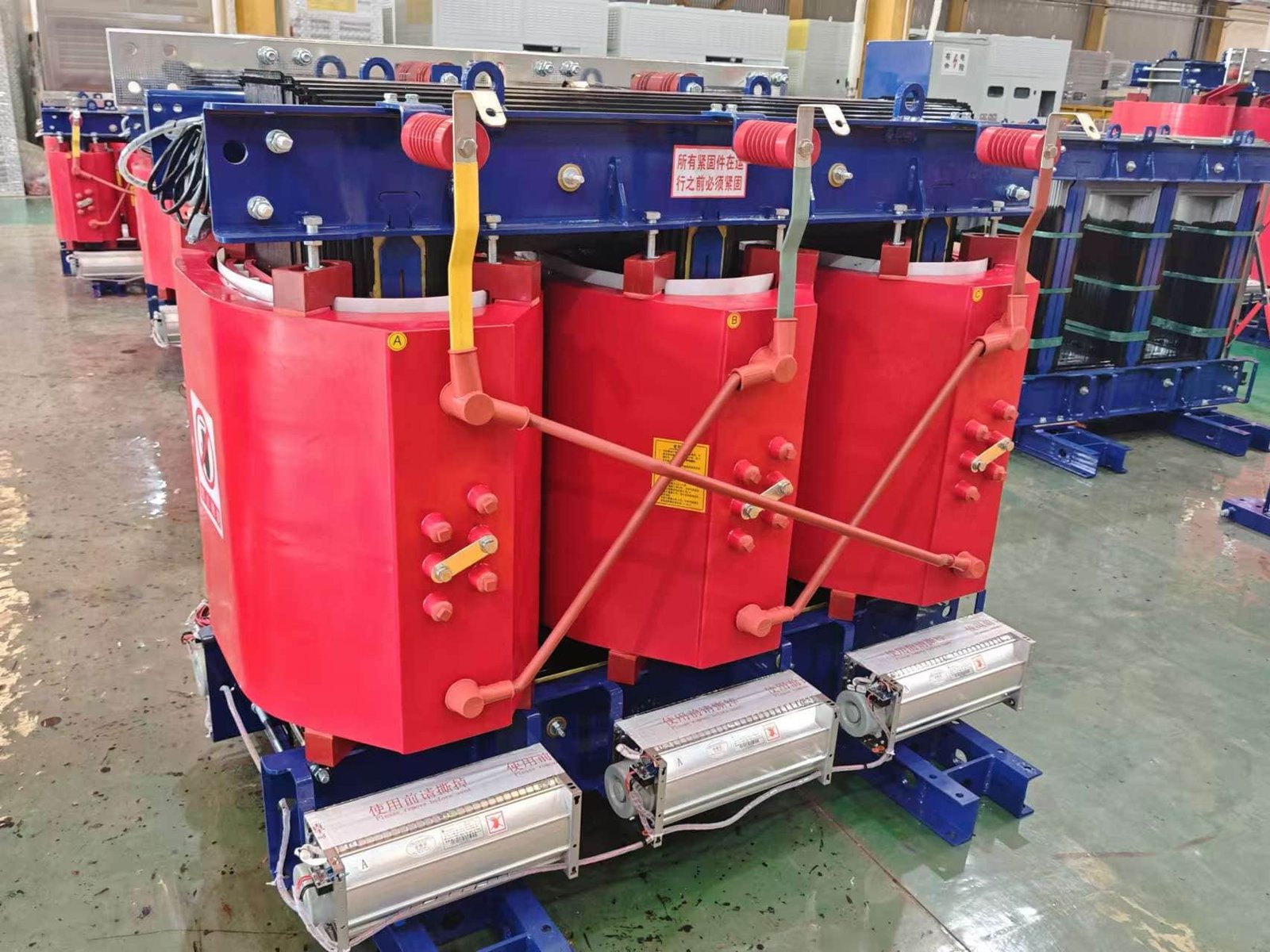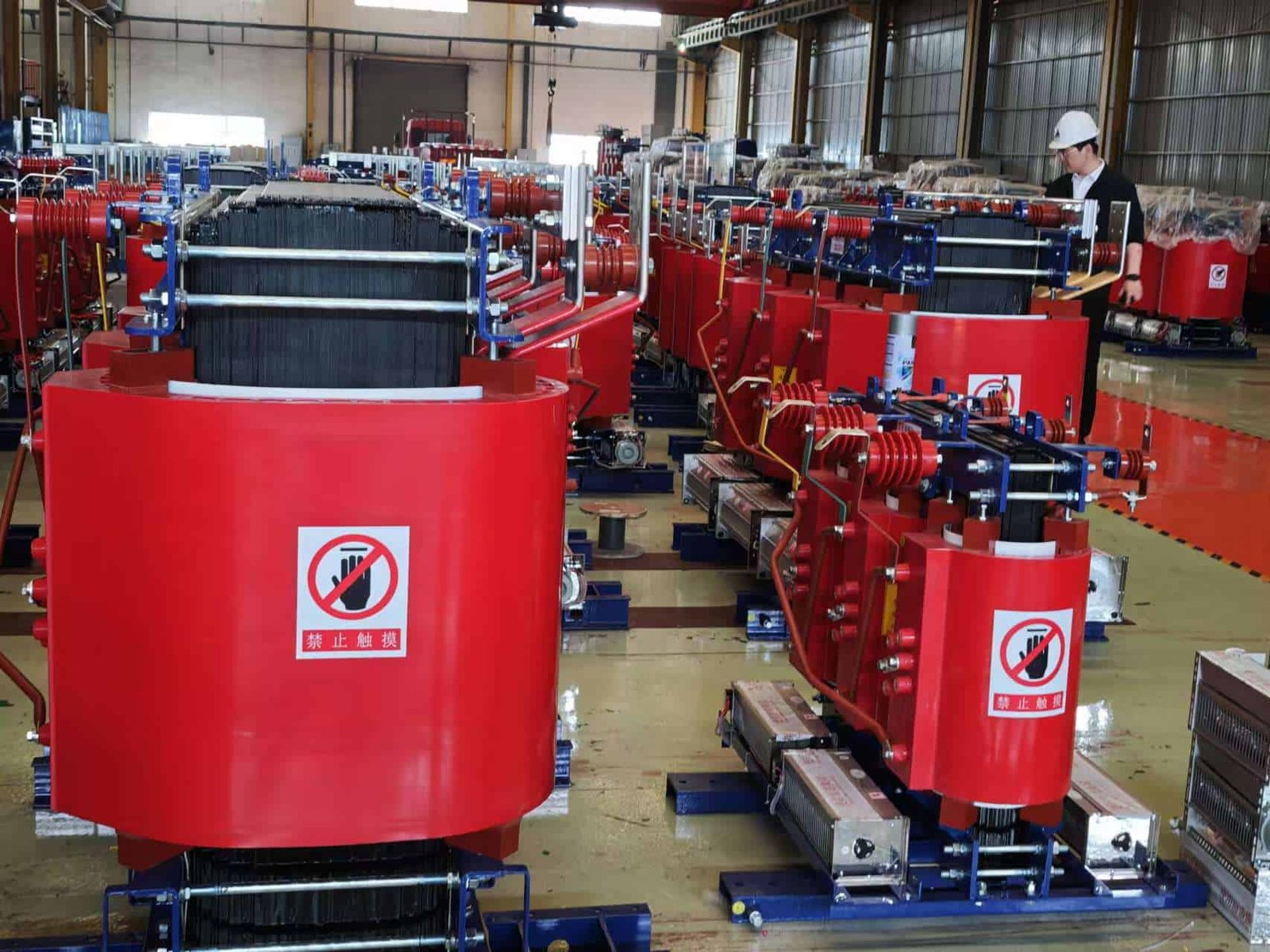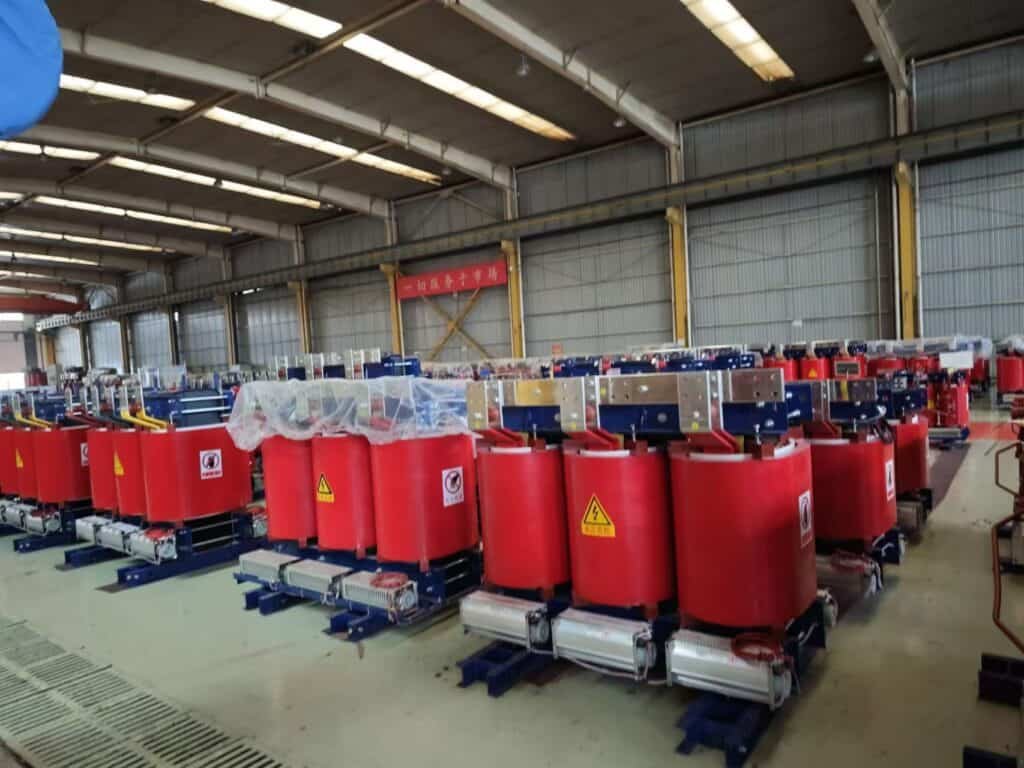As sustainability becomes a key priority in electrical infrastructure, dry type transformers stand out for their eco-friendly design. Unlike oil-filled transformers, they use solid insulation and air cooling, eliminating the risk of oil leaks and hazardous waste. Their low maintenance needs, safe operation, and compliance with environmental regulations make them a preferred choice in green building projects, renewable energy systems, and indoor applications.
How Do Dry Type Transformers Eliminate the Risk of Oil-Related Pollution?

In traditional oil-filled transformers, insulating oil provides both dielectric strength and cooling. While effective, it introduces a risk of leaks, spills, and contamination—especially in urban or sensitive environments. Oil leakage can lead to soil pollution, water contamination, fire hazards, and costly remediation efforts. This risk is magnified in basements, tunnels, or near waterways, where cleanup is complex and regulatory penalties are high.
Dry type transformers eliminate the oil entirely, using solid insulation systems (such as cast resin or vacuum pressure impregnated windings) and air for cooling. Without oil, there is zero risk of hydrocarbon leaks, groundwater pollution, or costly environmental cleanups, making them compliant with stringent environmental regulations and ideal for sensitive or indoor locations.
Dry type transformers completely remove the possibility of oil-related pollution.True
Dry type transformers do not use insulating oil, eliminating the risk of leaks, spills, or environmental contamination associated with oil-filled designs.
1. Environmental Risk Profile
| Feature | Oil-Filled Transformer | Dry Type Transformer |
|---|---|---|
| Risk of Oil Leak | High | None |
| Soil/Water Contamination Risk | Moderate to High | None |
| Spill Containment Required | Yes | No |
| Fire Hazard from Oil | High | None |
2. Compliance and Regulatory Benefits
- Meets EPA SPCC (Spill Prevention, Control, and Countermeasure) exemptions.
- Avoids need for oil containment pits, bund walls, or oil-water separators.
- Easier approval for indoor and environmentally protected areas.
- Reduced liability for environmental accidents.
3. Cost Savings from Eliminating Oil Risks
Example: 2 MVA Indoor Transformer in Commercial Building
| Cost Factor | Oil-Filled (USD) | Dry Type (USD) |
|---|---|---|
| Secondary Containment Build | $15,000 | $0 |
| Annual Oil Testing & Handling | $2,000/year | $0/year |
| Potential Spill Cleanup | $50,000+ | $0 |
| Environmental Permit Fees | $1,000/year | Minimal |
Over a 30-year lifecycle, avoiding oil-related pollution risk can save $80,000–$150,000 in direct and indirect costs.
4. Practical Applications
- Basement electrical rooms in high-rise buildings.
- Hospitals, schools, and data centers with zero-tolerance for contamination.
- Coastal or riverfront facilities with strict water protection rules.
- Tunnels and underground transport hubs where oil leaks would be catastrophic.
How Do Dry Type Transformers Reduce Fire and Explosion Hazards?
Oil-filled transformers depend on flammable mineral oil for cooling and insulation, which poses a risk of fire or explosion if overheating, arcing, or mechanical failure occurs. A leak combined with an ignition source can lead to catastrophic damage, especially indoors or in densely populated areas. In contrast, dry type transformers use air cooling and solid insulation materials such as cast resin or varnish, which do not involve large volumes of combustible fluids, drastically reducing the risk of fire propagation or explosion.
Dry type transformers reduce fire and explosion hazards by eliminating flammable insulating oil, using self-extinguishing insulation materials, and limiting fault energy release, making them inherently safer for indoor and high-occupancy installations.
Dry type transformers cannot catch fire under any condition.False
Although dry type transformers drastically reduce fire risk, extreme overloads or insulation failure can still generate localized burning; however, the absence of oil prevents large-scale fires and explosions.
1. Fire Hazard Comparison
| Aspect | Oil-Filled Transformer | Dry Type Transformer |
|---|---|---|
| Presence of Flammable Oil | Yes (hundreds of liters) | None |
| Explosion Risk | High (due to oil pressure build-up) | Very Low |
| Fire Spread Potential | High | Minimal |
| Self-Extinguishing | No | Yes (cast resin types) |
2. Safety Standards and Compliance
- Cast resin dry type transformers are self-extinguishing, compliant with IEC 60076-11 and UL 1562.
- They meet NFPA 70 (NEC) requirements for use in indoor, high-occupancy, and confined environments.
- Many designs are classified as non-flammable, reducing insurance and compliance costs.
3. Cost and Risk Avoidance
Example: 2.5 MVA Transformer in a Hospital Basement
| Cost Factor | Oil-Filled (USD) | Dry Type (USD) |
|---|---|---|
| Fire Suppression System (Sprinklers, Gas) | $25,000 | $0–$5,000 |
| Insurance Premium Loading | Higher | Lower |
| Fire/Explosion Incident Cleanup | $100,000+ | Minimal |
| Downtime & Liability | Extremely High | Significantly Lower |
4. Typical Applications Where Fire Risk Is Critical
- Hospitals, schools, and data centers where life safety and continuity are paramount.
- High-rise buildings requiring transformers in basements or mechanical floors.
- Underground transit systems where fire suppression is difficult.
- Chemical plants or refineries with strict non-flammable equipment rules.
How Do Dry Type Transformers Utilize Eco-Friendly Insulating Materials?

One of the critical environmental challenges with oil-filled transformers is their reliance on mineral oil, a petroleum-based product with potential risks of spills, pollution, and carbon footprint. In contrast, dry type transformers eliminate liquid insulation and instead rely on solid eco-friendly insulating materials such as epoxy resin, silicone resin, or Nomex® aramid paper. These materials are safer for the environment, recyclable in many cases, and free from toxic PCBs or hydrocarbons. This makes dry type transformers a green alternative that supports sustainability goals in modern infrastructure projects.
Dry type transformers use eco-friendly insulation materials such as epoxy resin, fiberglass, aramid paper, and non-toxic varnishes, which are halogen-free, self-extinguishing, recyclable, and free from petroleum-based fluids, making them environmentally safer and compliant with green building standards.
Dry type transformers contain no hazardous insulating materials.True
Dry type transformers use solid insulation materials such as epoxy resin or aramid paper, which are halogen-free and do not release toxic fumes under normal operating conditions.
1. Types of Eco-Friendly Insulating Materials
| Material | Application in Transformer | Eco-Friendly Attributes |
|---|---|---|
| Epoxy Resin | Cast resin winding encapsulation | Halogen-free, recyclable, high dielectric strength |
| Fiberglass | Reinforcement in resin systems | Non-toxic, durable, recyclable |
| Nomex® Aramid Paper | Insulation for windings | Heat-resistant, recyclable, non-polluting |
| Silicone Resin | Alternative varnish impregnation | Low environmental impact, stable under heat |
| Water-Based Varnish | Vacuum Pressure Impregnation (VPI) | Non-toxic, VOC-free, environmentally safe |
2. Environmental Compliance Benefits
- Meets RoHS (Restriction of Hazardous Substances) and REACH (EU chemical safety regulations).
- Complies with LEED® green building certification requirements.
- Free from PCBs (Polychlorinated Biphenyls) banned under international conventions.
- Reduced carbon footprint compared to oil-filled designs.
3. Sustainability and Lifecycle Impact
Example: 2 MVA Dry Type vs. Oil-Filled Transformer
| Factor | Oil-Filled Transformer | Dry Type Transformer |
|---|---|---|
| Insulating Medium | Mineral Oil (petroleum-based) | Solid epoxy/fiberglass |
| Spill Risk | High | None |
| Recycling Potential | Limited (oil disposal needed) | High (solid insulation and metals recoverable) |
| VOC/Toxic Emissions | Possible during oil degradation | Minimal to None |
| Carbon Footprint (Lifecycle) | Higher | Lower |
4. Real-World Applications
- Green buildings where LEED or BREEAM certification is required.
- Hospitals and schools that prioritize non-toxic, safe equipment.
- Data centers and tech parks with sustainability targets.
- Renewable energy installations (wind, solar, hydro) that demand low-impact electrical systems.
How Do Dry Type Transformers Ensure Low Maintenance and Reduced Waste Generation?
One of the hidden costs of traditional oil-filled transformers is the ongoing maintenance and waste management associated with insulating oil—regular oil sampling, purification, replacement, and safe disposal. Each of these steps creates operational downtime and generates hazardous waste. In contrast, dry type transformers, which rely on solid resin, fiberglass, or aramid insulation and natural or forced-air cooling, require minimal upkeep and produce little to no hazardous waste throughout their service life. This results in lower operating costs, simplified compliance, and a much smaller environmental footprint.
Dry type transformers ensure low maintenance and reduced waste generation by eliminating oil handling, requiring no routine fluid testing, producing no hazardous liquid waste, and offering long-lasting insulation systems that reduce the frequency of part replacement and end-of-life disposal needs.
Dry type transformers require no maintenance at all.False
While dry type transformers require significantly less maintenance than oil-filled units, they still need periodic inspections for dust accumulation, insulation condition, and cooling system performance.
1. Key Maintenance Advantages
| Aspect | Oil-Filled Transformer | Dry Type Transformer |
|---|---|---|
| Oil Testing & Filtering | Required regularly | Not applicable |
| Oil Leak Repairs | Common risk | Not applicable |
| Fire Suppression Systems | Often required | Not required |
| Dust Cleaning | Minimal concern | Required periodically |
| Moving Parts | Pump/fan systems | Limited or none |
2. Waste Generation Comparison
- Oil-Filled Units: Generate waste oil, oily rags, contaminated filters, and potential spill residues that must be handled as hazardous waste under EPA/ISO 14001 regulations.
- Dry Type Units: Generate only dust from ventilation cleaning and non-toxic debris from insulation wear after decades of service, which can often be recycled or disposed of safely.
Case Example – 1,000 kVA Transformer over 25 Years
| Waste Category | Oil-Filled Transformer | Dry Type Transformer |
|---|---|---|
| Waste Oil Generated | ~4,000–5,000 liters | None |
| Hazardous Disposal | Required | Not required |
| Fire Suppression Additives | Common | None |
| Solid Waste (end-of-life) | High (oil-soaked materials) | Minimal, recyclable |
3. Reduced Lifecycle Maintenance Costs
- No oil sampling laboratory costs.
- No oil handling training or safety equipment required.
- Lower insurance costs due to reduced fire risk.
- Maintenance limited to visual inspections, IR scanning, and dust removal.
4. Typical Applications Benefiting from Low Waste Design
- Hospitals, schools, and public buildings where compliance and sustainability reporting are required.
- Data centers and IT hubs where downtime must be minimized.
- Green-certified commercial projects aiming for LEED® or BREEAM points.
- Remote installations (wind or solar farms) where maintenance access is costly.
How Do Dry Type Transformers Improve Energy Efficiency and Reduce Carbon Footprint?

In today’s energy-conscious world, one of the biggest concerns for facility operators is reducing operating losses and associated carbon emissions. Oil-filled transformers often experience higher core losses due to design and cooling limitations, while their maintenance and oil handling processes further add to their environmental footprint. Dry type transformers, with their optimized magnetic core designs, high-grade silicon steel laminations, and eco-friendly insulation, are designed to achieve higher energy efficiency and support long-term carbon footprint reduction across diverse applications.
Dry type transformers improve energy efficiency and reduce carbon footprint by minimizing no-load and load losses through advanced core and winding designs, eliminating oil-related emissions, and lowering lifecycle maintenance energy use, making them more sustainable in commercial, industrial, and renewable energy applications.
Dry type transformers have zero energy losses.False
All transformers, including dry type, have some core and copper losses, but dry type designs minimize these losses compared to many conventional oil-filled models.
1. Efficiency in Loss Reduction
| Type of Loss | Source | Dry Type Advantage |
|---|---|---|
| No-Load Loss | Core hysteresis and eddy currents | Reduced using CRGO or amorphous steel |
| Load Loss | Copper I²R heating in windings | Lowered via high-purity copper and optimized design |
| Cooling Energy | Pumps/fans for oil circulation | Air cooling requires less energy, fans only in ONAF/VPI designs |
2. Energy Efficiency Standards Compliance
- Meets DOE 2016 and EU EcoDesign Tier 2 transformer efficiency regulations.
- Supports IE2/IE3 efficiency class targets for distribution systems.
- Compatible with ISO 50001 energy management systems.
3. Carbon Footprint Reduction Factors
- No oil production, handling, or disposal, cutting petroleum-related CO₂ emissions.
- Lower operating losses reduce kWh consumption, directly lowering CO₂ from grid electricity.
- Longer service life reduces frequency of manufacturing and replacement, lowering embodied carbon.
- Recyclable insulation and steel minimize end-of-life environmental impact.
Example Case Study – 1,000 kVA Transformer over 20 Years
| Factor | Oil-Filled Unit | Dry Type Unit |
|---|---|---|
| Average Efficiency | ~97.5% | ~98.5% |
| Annual Energy Losses (kWh) | ~219,000 | ~146,000 |
| Annual CO₂ Emissions (kg)* | ~110,000 | ~73,000 |
| Total CO₂ Savings over 20 yrs | — | ~740,000 kg |
*Based on 0.5 kg CO₂/kWh grid emission factor.
4. Practical Applications
- Data centers: reducing cooling and power costs.
- Hospitals and schools: lowering long-term energy bills.
- Renewable energy: solar and wind power systems where sustainability is essential.
- Urban infrastructure: smart cities and LEED®-certified projects aiming for carbon neutrality.
How Do Dry Type Transformers Support Compliance with Green Building and Environmental Standards?

When designing green-certified facilities such as LEED®, BREEAM, or WELL projects, electrical infrastructure often becomes a hidden factor in certification success. Traditional oil-filled transformers may create compliance challenges due to oil spill risks, hazardous waste handling, and reduced efficiency. In contrast, dry type transformers provide an environmentally friendly alternative, with non-toxic insulation, high efficiency ratings, low fire risk, and minimal waste generation. These attributes help developers and owners meet strict sustainability, safety, and environmental standards.
Dry type transformers support compliance with green building and environmental standards by eliminating oil-based pollution risks, meeting international efficiency regulations, using recyclable and eco-friendly materials, reducing carbon footprint, and aligning with certification frameworks such as LEED®, BREEAM, WELL, and ISO 14001.
Dry type transformers automatically guarantee LEED® certification points.False
While dry type transformers support sustainability goals, certification depends on the entire building design. Transformers contribute indirectly by reducing energy use, emissions, and environmental risks.
1. Alignment with Major Green Standards
| Standard / Certification | Dry Type Transformer Contribution |
|---|---|
| LEED® (USGBC) | Energy & Atmosphere credits (efficiency), Materials & Resources credits (recyclability), Indoor Environmental Quality (safety, no oil vapors). |
| BREEAM (UK) | Energy performance (low losses), Pollution control (no oil leakage), Health & Wellbeing (low noise, safe installation). |
| WELL | Supports healthy environments by avoiding oil fumes, noise reduction, and enhancing resilience. |
| ISO 14001 | Demonstrates environmental management by reducing hazardous waste and carbon emissions. |
| EU EcoDesign | Meets strict transformer efficiency and lifecycle impact requirements. |
2. Environmental Compliance Benefits
- No Oil Leakage Risk → prevents soil and groundwater contamination.
- Reduced CO₂ Emissions → through higher efficiency and lifecycle savings.
- Recyclable Materials → copper, steel, and resin contribute to circular economy goals.
- Fire Safety Compliance → dry type units comply with NFPA 70, IEC 60076-11, avoiding toxic smoke hazards.
3. Case Study – Green Building Integration
A 5 MVA dry type transformer in a high-rise LEED® Gold project demonstrated:
- Annual energy savings: ~400,000 kWh compared to older oil-filled units.
- CO₂ reduction: ~200,000 kg/year.
- Certification impact: Contributed to 6 LEED® points under Energy Optimization and Environmental Quality.
- Safety compliance: Eliminated need for costly fire suppression system.
4. Added Value for Project Stakeholders
- Architects: Flexibility in indoor design (no oil tanks or fire barriers required).
- Owners: Lower lifecycle costs and higher certification ratings.
- Contractors: Simplified installation without oil spill containment systems.
- Operators: Reduced maintenance, inspections, and reporting burden.
Conclusion
Dry type transformers contribute to a cleaner and safer environment by eliminating oil hazards, reducing fire risks, and using eco-friendly materials. They align with global sustainability goals and help organizations meet environmental compliance requirements while ensuring reliable power delivery. In projects where both performance and environmental responsibility matter, dry type transformers are a smart and future-proof choice.
FAQ
Q1: Why are dry type transformers considered eco-friendly?
Dry type transformers use solid insulation and air cooling instead of oil, eliminating the risk of hazardous oil leaks. This makes them safer for the environment and well-suited for eco-conscious projects.
Q2: How do dry type transformers prevent soil and water pollution?
Since they are oil-free, there’s no risk of transformer oil leaking into soil or groundwater. This reduces contamination risks, especially in sensitive environments like hospitals, schools, and water treatment plants.
Q3: Do dry type transformers contribute to energy efficiency?
Yes, many modern dry type transformers are designed with high efficiency and low losses, reducing energy waste. Lower energy consumption translates to a smaller carbon footprint over the transformer’s lifetime.
Q4: How do dry type transformers support green building standards?
Dry type transformers align with LEED and other green building certifications by minimizing environmental hazards, requiring less maintenance, and promoting energy efficiency. They are often recommended for sustainable construction projects.
Q5: Can dry type transformers reduce lifecycle environmental impact?
Yes, with longer lifespans, less maintenance, and no oil disposal requirements, dry type transformers lower lifecycle environmental impact compared to oil-filled units. They also reduce waste and operating emissions.
References
IEEE - Environmental Impact of Transformers: https://ieeexplore.ieee.org
NEMA - Dry Type Transformer Standards: https://www.nema.org
Electrical4U - Dry Type Transformer Benefits: https://www.electrical4u.com
EEP - Environmental Advantages of Dry Type Transformers: https://electrical-engineering-portal.com
Energy.gov - Transformer Efficiency and Environmental Standards: https://www.energy.gov
All About Circuits - Dry Type Transformer Overview: https://www.allaboutcircuits.com
Engineering Toolbox - Transformer Efficiency Data: https://www.engineeringtoolbox.com


